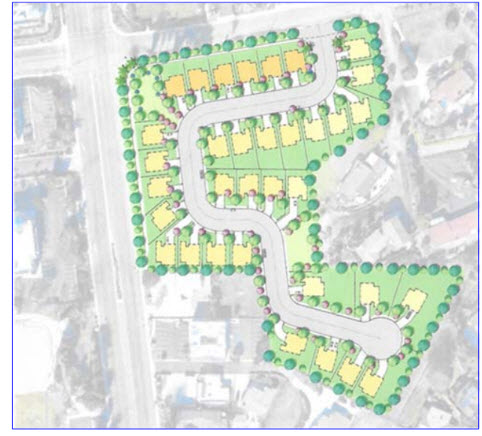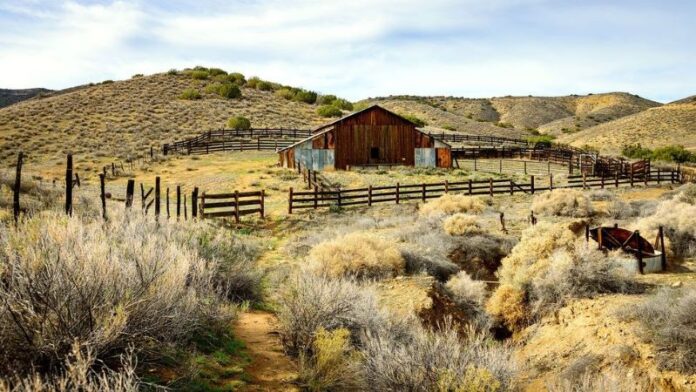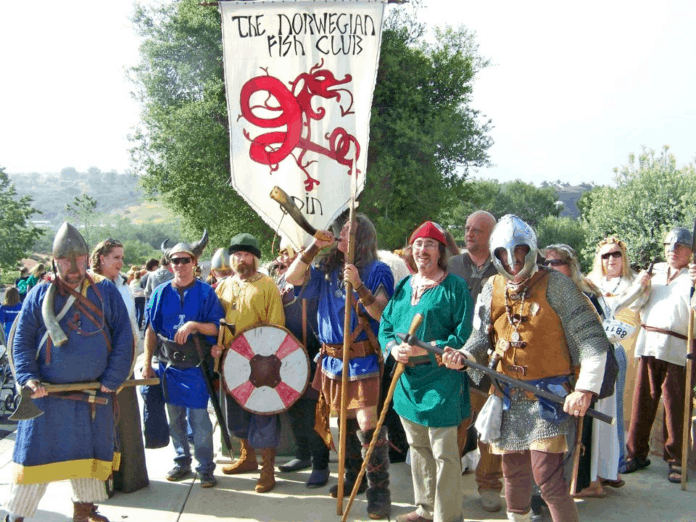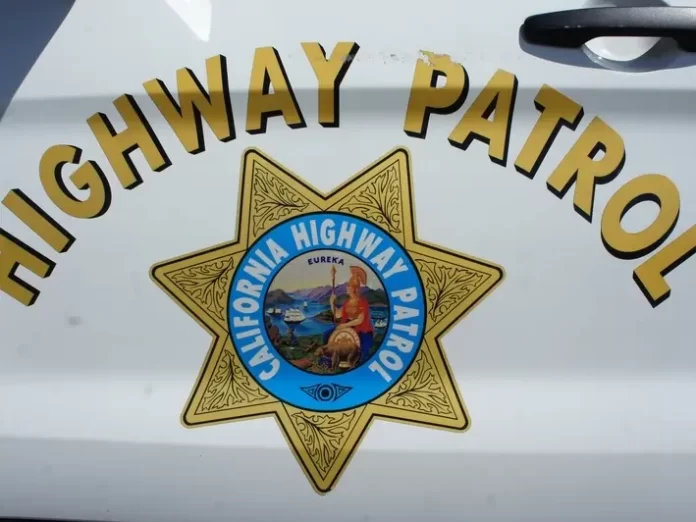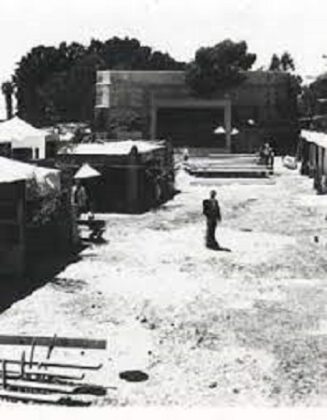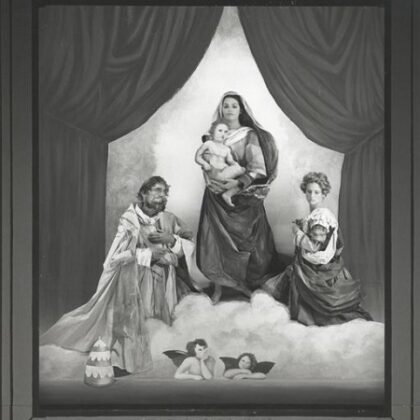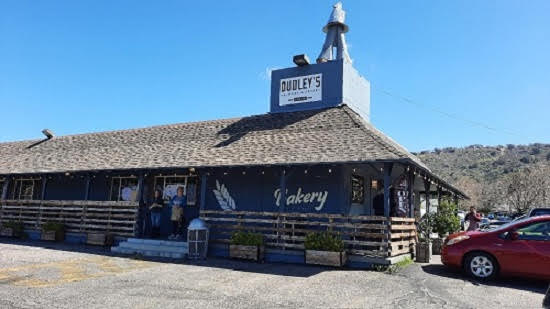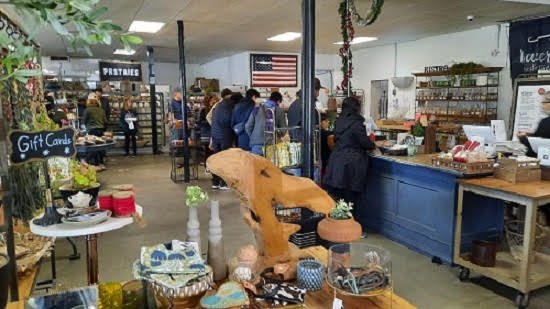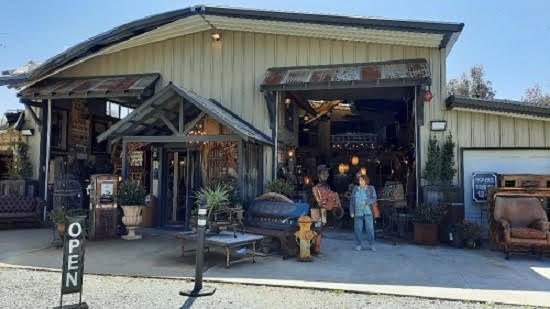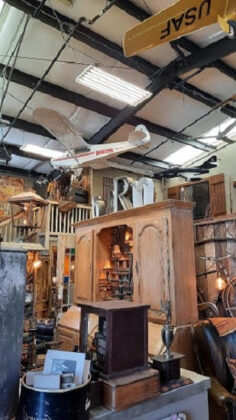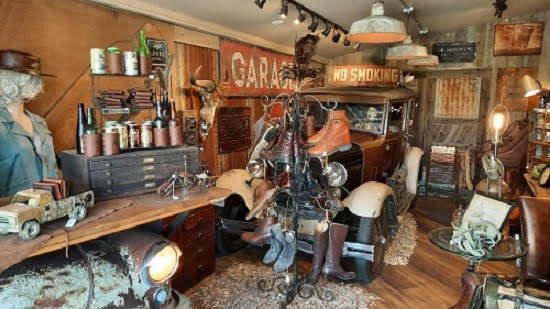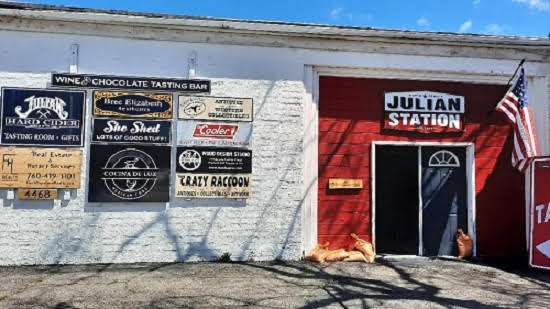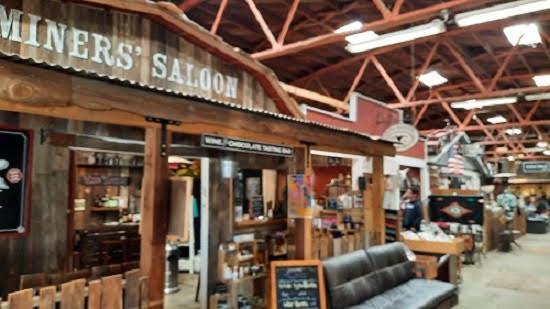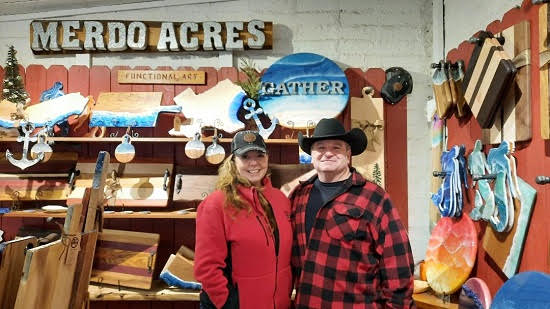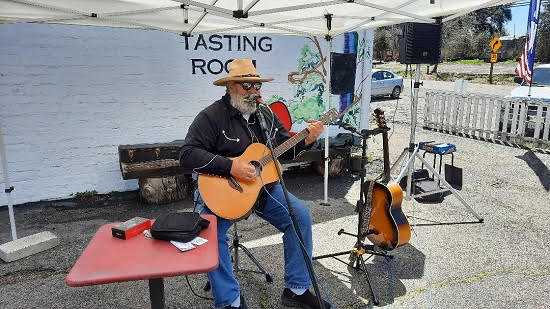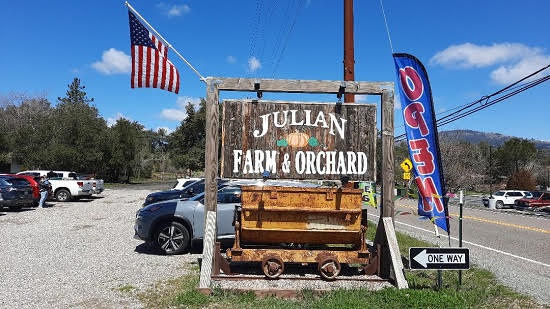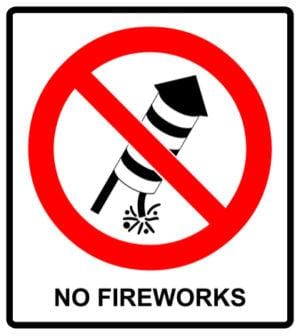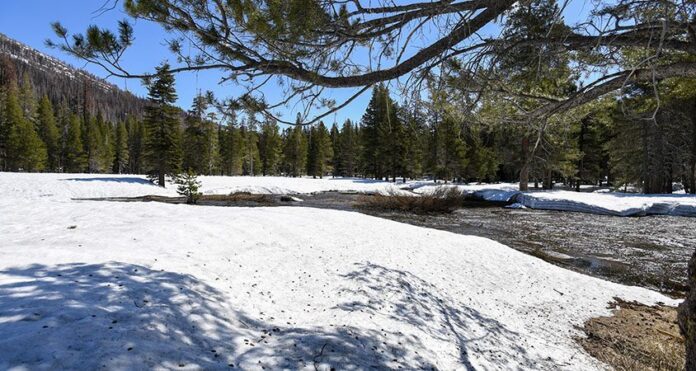SOUTH VISTA NEWS
The new residential project of 34 homes, pro-posed by True Life Companies for 560 and 622 So. Melrose, will be presented at the Vista City Council meeting on June 27 at 5:30 p.m.
The agenda report for the project can be found at https://records.cityofvista.com/weblink/0/doc/2049185/Page1.aspx
Matagual-Melrose Project Goes to City Council
Help for Rural California
By Assemblymember Marie Waldron
The 75th Assembly District, which I am honored to represent in Sacramento, covers the largely rural eastern two-thirds of San Diego County, and is home to much of our agricultural areas and tribal governments. Unfortunately, much of that area lies within a Very High Fire Risk Severity zone and needs reliable, sustainable water infrastructure. Given our region’s vulnerability to recurring droughts, diminishing groundwater resources and wildfires, I am very pleased to support AB 1567 (Assemblyman Eduardo Garcia, D-Coachella, and others). Once approved by voters, projects including wildfire prevention, drought preparation, sustainable ground water, dam safety and tribal water infrastructure projects will move forward. Last week I joined Assemblyman Garcia, Rincon Tribal Chairman Bo Mazzetti and others at a press conference to speak in favor of AB 1567. This bipartisan legislation passed on the Assembly floor without opposition, and has now been forwarded to the Senate for final approval.
Funding in the bill also includes resources for agriculture, as well as fire mitigation and prevention, both much needed here in rural San Diego County.
Of special significance for our region, San Diego County’s 18 sovereign Indian reservations will also benefit from AB 1567. $200 million will be made available for tribes throughout the state supporting their plans to build critical water infrastructure. For example, local tribes including Pala, Pauma, Rincon, San Pasqual, and La Jolla are seeking upgrades to their water distribution and sewer systems, along with new water wells and storage tanks. AB 1567 will lead to badly needed water infrastructure upgrades throughout California, allowing tribal nations to modernize their water systems and bring them up to 21st century standards.
AB 1567 is supported by groups as diverse as the City and County of Riverside, Nevada County, San Bernardino County, the California Builders Alliance and The Nature Conservancy. Once the bill receives final legislative approval in the Senate, it will be submitted to California’s voters who will make the final decision about this important initiative.
Assemblymember Marie Waldron, R- Valley Center, represents the 75th Assembly District in the California Legislature, which includes the cities of Poway, Santee, portions of the City of San Diego, and most of rural eastern and northern San Diego County.
Vista Viking Festival is on the Move to AGSEM (Antique Gas & Steam Engine Museum)
Vista Viking Festival returns for its 21st year on September 16th & 17th 2023. Full information at www.VistaVikingFestival.com
Tickets are on sale at https://www.simpletix.com/e/vista-viking-festival-tickets-129048
Vista Viking Festival, California’s Premiere Viking and Nordic Heritage Event, is moving 2 miles down the road to the Antique Gas & Steam Engine Museum (AGSEM). For the past 20 years, Norway Hall has played host to the Vista Viking Festival but we have outgrown our humble home.
The new space will be over twice the size meaning:
More Viking Villages and re-enactors,
More Viking Vendors
More Food Vendors
More space for Viking Sports
More space for Viking Combat
More space for Guest Competitions.
Weapons Range
Blacksmithing
ADA accessible — no more climbing hills or cramped spaces.
Parking will be at the event — No more shuttle buses.
Entertainment will include:
Damekor Choir,
Silk Button Butchers,
Blindfold Monks
Highland Way.
Tickets may be purchased online: Adults (18+) $22.50 until 7 Sep 2023 ($25 after), Youth (12-17) $10, Child (6-11) $5, 5 & under — Free.
The Antique Gas & Steam Engine Museum is located at 2040 N. Santa Fe Drive, Vista CA.
Vista Viking Festival is presented by Norway Hall Foundation, a 501c3 non-profit, whose purpose is to promote and sustain Norwegian and Scandinavian culture.
Vista Viking Festival proudly supports the MS National Walk as part of team Norwegian Fish Club Odin — please donate to help fund MS research and support those with MS https://mssociety.donordrive.com/index.cfm?fuseaction=donate.team&teamID=32338
Mom Accused of DUI After 2 Children Killed on Freeway
California Highway Patrol (CHP -A woman who law enforcement said was driving the SUV that her two children were in before they hopped out and were killed by another driver on a Vista freeway was arrested on suspicion of DUI.
California Highway Patrol (CHP) said the incident was reported Sunday evening when the children – a 10-year-old boy and a 16-year-old girl – were struck by a Nissan Sentra on SR-78. According to CHP, the crash happened when a GMC Yukon pulled to the right shoulder of the freeway and the two children stepped out of the vehicle. A Nissan Sentra traveling eastbound on SR-78 struck the children.
Both children were declared dead at the scene, CHP said. Officials said on Monday morning that the family was homeless at the time of the incident.
The children’s father and an aunt told NBC 7 on Monday that Alan Gerardo Aguilar, 10, and Amy Monserrat Beltran, 16, were killed in the incident. They also said that the family went to a park on Sunday to sell bracelets to get a present for Father’s Day, adding that there were six kids in the car when the pair were killed. The father told NBC 7 that the children were attempting to retrieve Alan’s backpack when they died.
The driver of the Nissan, who was only identified as a 41-year-old woman from Vista, stayed at the scene.
As the investigation progressed, the woman driving the Yukon was arrested in connection with the death. The driver, who officials identified as Sandra Ortiz, 33, of Vista, faces charges that include DUI, gross vehicular manslaughter while intoxicated and child endangerment.
The investigation is ongoing. Anyone with information on the case is encouraged to contact CHP’s Oceanside-area office at 760-643-3400.
Missing Hiker Search Ends – Julian – Body was Recovered Underwater
The search for a missing hiker in Julian has concluded.
Volunteer divers with the San Diego County Sheriff’s Department Reserve Unit found a body just before 1:30 p.m. on Monday, June 19.
The body was recovered underwater in the middle pool of Three Sisters Falls. This is the same area where the missing man was last seen on Friday, June 16.
For four days, deputies with the Alpine Sheriff’s Station, Julian Sheriff’s Substation, Sheriff’s ASTREA helicopter, CAL FIRE and U.S. Forest Service continuously searched for the man.
The water current was too dangerous for divers to attempt a search underwater until today. The body has been turned over to the Medical Examiner’s Office just before 4:00 p.m. at the trailhead. The M.E. will make a positive identification of the man, as well as determine cause and manner of death pending notification of his family.
The family is declining requests for comment or media interviews and is asking for privacy during this difficult time. A Sheriff’s family liaison lieutenant, a Sheriff’s Chaplain and representatives with Trauma Intervention Programs of San Diego (TIPS) have been provided to the family.
The U.S. Forest Service has reopened Three Sisters Falls. This trail is extremely strenuous, and it is not for beginners. Please use caution when hiking.
We thank all the volunteers who helped during the search operations. Sheriff’s Search and Rescue (SAR) is an all-volunteer unit. Together, they perform wilderness and urban rescues and search for missing and at-risk persons. Teams are available 24 hours per day to respond to local, state and federal agency requests. To learn more about SAR, visit: www.sdsheriff.gov/volunteer
Laguna Beach’s Pageant of the Masters Celebrates its 90th Anniversary
By TR Robertson
Once again, the streets of Laguna Beach will be alive this summer with visitors, locals, art lovers and artists of every media as the Pageant of the Masters, the Festival of the Arts, the Sawdust Festival, Laguna Art-A-Fair and numerous local galleries will feature art of every shape, style and form for people to enjoy. For the Pageant of the Masters, this is a special year as the Pageant will be celebrating its 90th anniversary as it presents the 2023 theme, “Art Colony: In the Company of Artists”, with performances running from July 7th until September 1st. This year’s theme celebrates and portrays nine to ten art colonies and artists stories that have made significant contributions to the art world in locations around the world. These 41 “tableaux vivants” (“living pictures”) will features artists and their work from art colonies that developed in locations like Florence, Paris, New Mexico, Harlem, East L.A., and New York City. The Pageant has been called “one of the most unique theatrical productions in the world”.
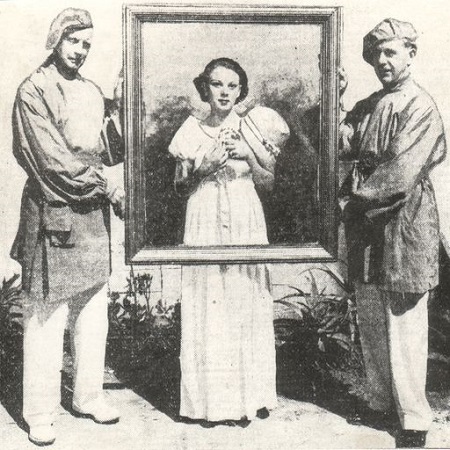
Laguna Beach’s beginning as a location for artists of every medium goes back to 1903 when artist Norman St. Clair arrived in the area. He is credited with establishing Laguna Beach as an art colony, enticing other artists to move to this beach community. By 1918, the towns first art gallery was opened, today the location of the Laguna Art Museum on Cliff Drive. To understand how this incredible display of art pieces, known as the Festival of the Arts and the Pageant of the Masters, began we have to go back to 1932, at a time when the United States was caught in the throes of the Great Depression and life in the U.S. for most people was a traumatic time. On a Saturday, August 13, 1932, under the guidance of local artist John H. Hinchman, two dozen artists got together to hang their art on fences, trees and buildings along Laguna’s El Paseo Street, near Hotel Laguna, in hope they could attract tourists to the town to admire and hopefully purchase some of their work. The painting Flower Stalls, by Virginia Woolley, was one of the first paintings sold and this painting is now in the Festival of Arts permanent collection and can be found on display at the Festival of the Arts, just outside the Pageant amphitheater. Also, on display at this outdoor art show was music, colorful signs, and artists painting while people wandered through the streets. This first art presentation lasted until August 20th.

This simple beginning would continue the following year, this time lasting eight days, and would have a .10 cent admission charge. The 1933 Festival of the Arts would also mark the debut of the “Spirit of the Master’s Pageant” and a new promotional piece was added to bring even more recognition to Laguna Beach. Using an idea developed by artist Lolita Perine, Laguna Beach local volunteers, dressed as famous works of art, walked along Coast Highway to the location for the second festival, where they would pose in tiny booth-like sets depicting paintings like Whistler’s Mother, Girl of the Golden West, Blue Boy, the Mona Lisa, Sistine Madonna and sculptures like Atlas. These “living pictures” would become the large scale, famous Laguna Beach Pageant of the Masters, performance we know today. Those attending this presentation did not sit for the artistic performances, instead they walked around viewing people posing in the booths. A Board of Directors was formed in 1934 with George A. Portus the first Board President. In 1936, the “living pictures” featured The Last Supper by Leonardo da Vinci as the closing art piece. The Last Supper has been the last presentation for the Pageant ever since. The first Pageant Director was Roy M. Ropp, a local artist and builder who produced the Pageant annually through 1941 and also in 1950.

The Festival of Arts and what would become known as the Pageant of the Masters has moved several times during the 90-year history. Beginning on El Paseo Street for the 1932-33 years and again in 1936, the Festival was on Ocean Avenue in 1934, next to the Cliff Drive Art Gallery in 1935, on Third Avenue (where City Hall is now located) from 1937-1940. In 1941 the location moved to Irvine Bowl Park at 650 Laguna Canyon Road, shut down from 1942-1945 during World War II and begin again in 1946 until the present. Attendance at the first Festival is estimated to have been approximately 2,200 people. Today, around 225,000 people annually attend. The Irvine Bowl Park and grounds covers 5.6 acres. The Bowl capacity is 2,600. The property is owned by the City of Laguna Beach and is leased to the Festival. The Festival of Arts is a non-profit, year-round operation governed by a 9-member board of directors.
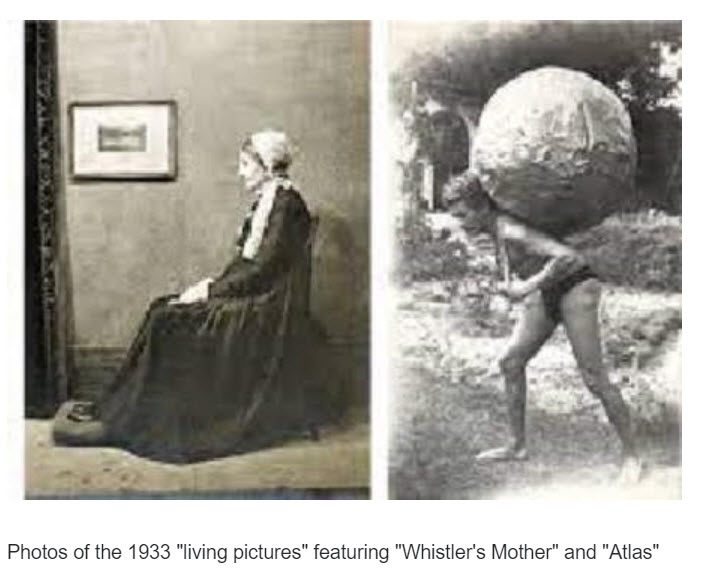
Hundreds of volunteers assist the performer’s preparation during the performances. Two cast groups of around 100 per group are divided into Green & Blue cast groups for the shows, alternating for the performances. Some volunteers have been involved for many years, the oldest volunteer serving the Pageant for 35 years.
The large outdoor amphitheater, the Irvine Bowl, faces a massive stage, complete with an orchestra pit for the live orchestra performances during the Pageant. Next to and behind the amphitheater are the workshops used to construct the sets, backdrops, and artistic pieces for the Pageant. The Festival of Arts is exhibited in a beautiful open-air gallery where over 100 award winning Orange County artists display their work, ranging from paintings, to glass, ceramics, photography, sculpture and more. Located next to the Festival of the Arts is the Terra Laguna Beach Restaurant for on-property dining. Also close by is the Intermission Concession Stand and at the entrance a Boutique style gift shop. Located close to the entrance is an entertainment stage where performers entertain the visitors prior to the start of the Pageant of the Masters.
The Pageant of the Masters Director,
Diane Challis Davy, said, “My goal for this year is to select a majority of artwork that has never been presented by the Pageant.”
Featured this year will be artists making their first appearance at the Pageant of the Masters. This includes artists like African American sculptor Meta Fuller and Augusta Savage and painter Aaron Douglas, Chicano artist David Botello and Native American paintings by Bert Geer Phillips. Also featured from the various art colonies that formed throughout the years will be the work of Auguste Renoir, Henri de Toulouse-Lautrec, sculptor Luca della Robbia and Laguna Beach artist Roger Kuntz. Audiences will be treated to a unique experience this year complete with several surprises.

This wonderful Pageant and Festival is a “should not miss attraction for the summer”. Make a day of it; arrive early, enjoy the different art festivals in the area, have lunch on the Festival grounds or at one of the eateries in Laguna Beach, and allow yourself enough time to explore the Festival of the Arts exhibits before seeing the Pageant of the Masters performance. Go to www.PageantTickets.com for more information or call 800-487-3378.
The next article will cover a behind the scenes look at what goes into making this incredible Pageant of the Masters performance.
PRIVATE USE OF FIREWORKS IS PROHIBITED IN ESCONDIDO
Escondido, CA – As the Fourth of July holiday approaches, residents and visitors are reminded that all fireworks are illegal to purchase, possess or use in Escondido and throughout San Diego County. That includes firecrackers, cherry bombs, bottle rockets and even sparklers.
“Fireworks are extremely dangerous and their use can easily cause serious injuries and start fires” said Escondido Fire Chief, Rick Vogt.
“Everyone needs to remember that ALL fireworks are illegal in San Diego County, and for good reason. Considering the dry grass and brush in and around Escondido, anyone thinking about buying and using illegal fireworks needs to understand that negligently causing a fire can result in criminal and financial consequences.”
In addition to property damage, fireworks can also cause serious injuries. According to the National Fire Protection Association (NFPA), thousands of people, including children and teens, are injured every year while using consumer fireworks. Even something as “harmless” as a sparkler, which burns at over 1,200 degrees Fahrenheit, can cause critical injuries and pose a serious fire hazard. Additionally, the NFPA states that nationally two out of five fires reported on Independence Day are started by fireworks.
The Escondido Fire Department is kicking off its annual Fireworks Collection Campaign this week. Escondido residents can turn in fireworks, no questions asked, from Saturday, June 24 until Wednesday, July 5 at any Escondido Fire Station. The purpose of the Fireworks Collection Campaign is to reduce the number of fires and injuries caused by illegal fireworks. For more information, Escondido residents are encouraged to call the Escondido Fire Department at 760-839-5400. Residents of other cities are encouraged to contact their own local Fire Departments for more information about fireworks in their jurisdictions.

The City of Escondido is excited to be hosting a free, professional fireworks show to celebrate Independence Day. The California Center for the Arts, is also hosting free activities in Grape Day Park leading up to the fireworks. The community is welcome to enjoy the fireworks show from anywhere in central Escondido including Grape Day Park. The fireworks will be launched from their typical location in the Woodward Avenue parking lot at 9 p.m. Grape Day Park will be open past dusk with traditional regulations in place – no dogs, BBQs, or alcohol. Learn more about the Independence Day celebration at artcenter.org/event/independence-day-concert-fireworks/


